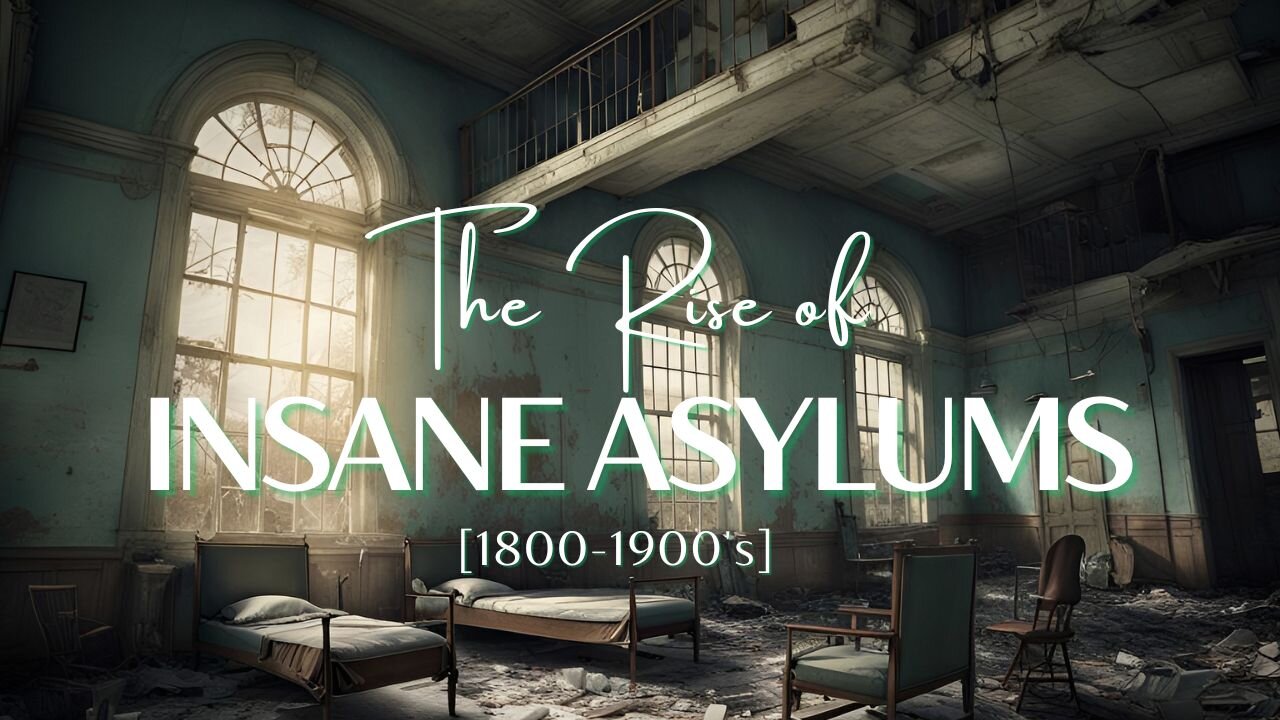Premium Only Content

The Rise of Insane Asylums in the 1800's & their role in The Orphan Trains
The Orphan Train movement ushered in mental asylums in order to recondition people, starting around the 1700's. Vast populations of immigrants travelled to the U.S. from greater Tartaria along with Russia and Eastern Europe. We have to ask the question as to whether people who did not conform and/or agree with the ruling class were confined to these asylums. If that were the case, were there children abandoned in cities and then put on Orphan Trains to disburse them all over the country to families who needed workers on the farm? [1860-1880]
The establishment of mental asylums in the United States during the late 1700s through the 1900s was a significant period in the history of psychiatric care. Here are some key points:
Dorothea Dix, a tireless advocate for psychiatric care for the poor and disenfranchised, is chiefly responsible for the mass construction of state mental hospitals in the U.S. in the 1800s. Waves of immigration from Ireland, Germany, and Italy led to rapid population growth, prompting a greater need for appropriate medical and psychiatric treatment.
Thomas Story Kirkbride, a Pennsylvania psychiatrist, founded the Association of Medical Superintendents of American Institutions for the Insane, a group that later became the American Psychiatric Association. He is best known as the originator of the Kirkbride Plan for the construction of state mental hospitals.
At one point in the 1950s, more than half a million Americans were confined to state psychiatric institutions, many of them for life. Today, the total number of state psychiatric beds in the U.S. sits around 37,000, with most beds on short-term, acute inpatient units in general medical hospitals.
The treatment of mental illness has an unsavory history, and the cruelty inflicted upon the mentally ill in asylums throughout western history has been well-documented. However, in the 1700s and 1800s, reformers such as Philippe Pinel and William Tuke in Europe and Benjamin Rush and Dorothea Dix in the United States led the charge to make humane treatment for mentally ill individuals the norm, with a special emphasis on improving conditions for those who were confined to mental hospitals.
The mass closure of state mental hospitals in the United States coincided with the advent and popularity of neuroleptic medications, the patient rights movement, and the well-intentioned, but poorly delivered, national transition towards community-based mental health care. This period marked a significant shift in the approach to mental health care, with a move away from institutionalization towards community-based care and treatment along with the rise of the pharmaceutical companies.
WHO WAS DOROTHEA DIX?
Dorothea Lynde Dix (April 4, 1802 – July 17, 1887) was an American advocate on behalf of the indigent mentally ill.
• After seeing horrific conditions in a Massachusetts prison, she spent the next 40 years lobbying U.S. and Canadian legislators to establish state hospitals for the mentally ill.
• Her efforts directly affected the building of 32 institutions in the United States.
• She began teaching school at age 14 and later founded the Dix Mansion, a school for girls, along with a charity school that poor girls could attend for free.
• She also began writing textbooks, with her most famous, Conversations on Common Things, published in 1824.
• Dix was also designated as the Superintendent of Army Nurses for the Union Army during the Civil War. She appointed more than 3,000, or about 15%, of Union Army nurses.
• She died on July 17, 1887 and is buried in Cambridge, Massachusetts.
SOURCE
Zachary Denman
Sacred Wisdom Podcast
History of Psychiatric Hospitals - Penn Nursing
https://www.nursing.upenn.edu/nhhc/nurses-institutions-caring/history-of-psychiatric-hospitals/
-
 11:19
11:19
The Aquarius Bus
16 days agoBy 1900, 38% of cars in America were electric! Wanna know how they were powered & charged?
7924 -
 47:13
47:13
PMG
17 hours ago"Hannah Faulkner and Doug Billings | WHY LIBERALS LOST THE ELECTION"
252 -
 59:01
59:01
The Liberty Lobbyist
3 hours ago"We Only Have NOW To Make a Difference"
1401 -

CatboyKami
4 hours agoStalker 2 Blind playthrough pt1
551 -
 1:06:27
1:06:27
Russell Brand
4 hours agoNeil Oliver on the Rise of Independent Media, Cultural Awakening & Fighting Centralized Power –SF498
144K217 -
 1:39:14
1:39:14
vivafrei
4 hours agoSoros Karma in New York! Tammy Duckwarth Spreads LIES About Tulsi Gabbard! Pennsylvania FLIPS & MORE
63.2K56 -
 1:57:36
1:57:36
The Charlie Kirk Show
4 hours agoInside the Transition + The Bathroom Battle + Ban Pharma Ads? | Rep. Mace, Tucker, Carr | 11.21.24
114K49 -
 59:20
59:20
The Dan Bongino Show
7 hours agoBitter CNN Goes After Me (Ep. 2375) - 11/21/2024
783K3.28K -
 57:28
57:28
TheMonicaCrowleyPodcast
2 hours agoThe Monica Crowley Podcast: Mandate into Action
3.19K -
 1:02:09
1:02:09
TheAlecLaceShow
5 hours agoGuests: Alex Marlow & Terry Schilling | Justice For Laken Riley | Russian ICBM | The Alec Lace Show
21.7K8